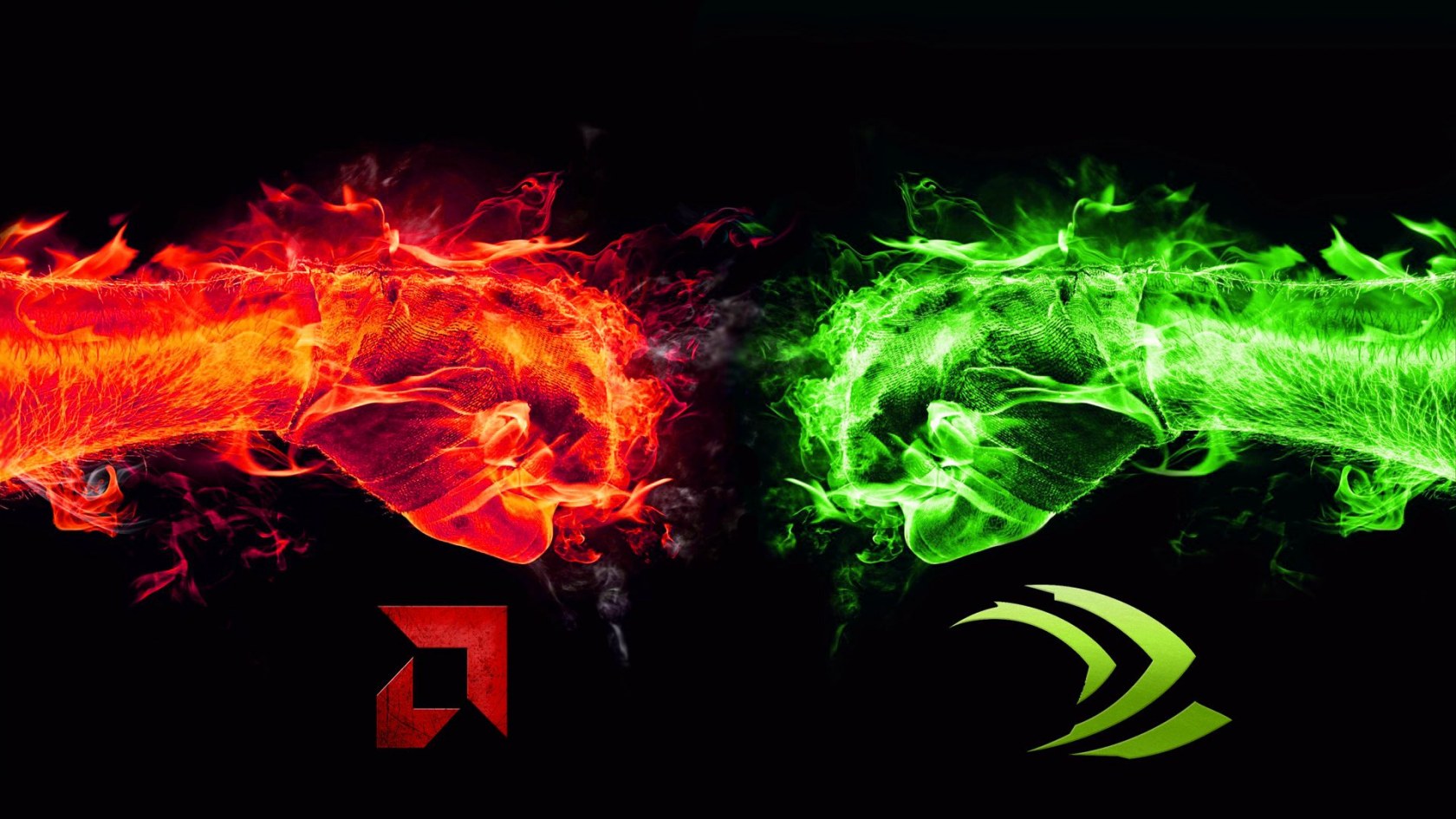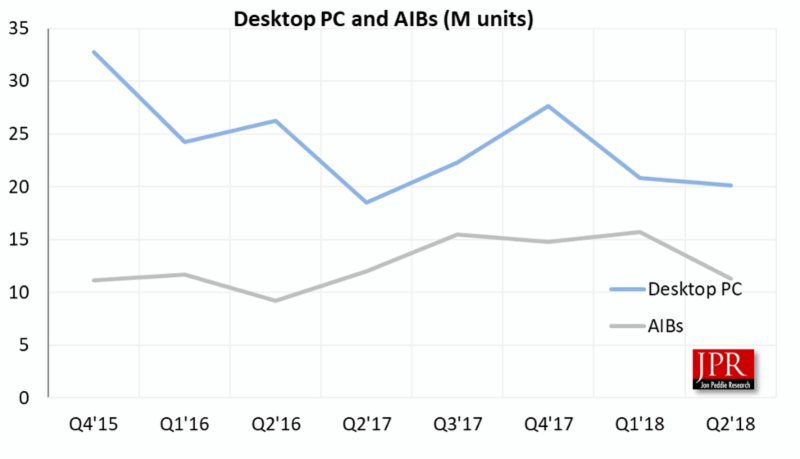LemmingOverlrd
Posts: 86 +40
Why it matters: Despite increasing its lead over AMD, Nvidia is known to have had a bad quarter. Had it not been the crash of the cryptomining market, AMD might have been looking at a rout.

Jon Peddie Research has released its latest quarterly report on the add-in board market report (focusing exclusively on GPUs). Nvidia is increasing its lead over AMD, despite the latter still performing well.
The market, says JPR, slowed down during the second quarter as attach rates slipped with the cryptomining fever coming to an end. While PC shipments shrank by just 3.4 percent that quarter, the AIB share took a 28 percent nosedive quarter-on-quarter, a notoriously steep decline and greater than the 9.8 percent ten-year average shrink of the quarterly Q2 drop. Overall, year-on-year, the AIB market fell 5.7 percent.

Looking at the table, in the second quarter of 2018, the balance has once again tipped in Nvidia's favor, with the green team taking 4 points away from AMD and now sitting at a comfortable 69.1 percent share of the market. AMD slipped from 34.9 to 30.9 percent market share. Still, it isn't a fiasco for AMD, as it is still holding its own in the GPU arena, boasting a year-on-year increase in market share of 0.5 percent.

JPR also highlighted the fact that both AMD and Nvidia are now not only shipping GPUs to their AIB partners, but they are also building and selling their own cards.
Despite Nvidia taking market share from AMD, we are under the impression that Q2 was not, in fact, a good quarter for them. Its attempts in cryptomining were foiled when the market bottomed out, and it was left hanging with thousands of GPUs it is still trying to offload via AIB partners. On the other hand, this next quarter will most likely show Nvidia gaining a bit more ground as it had fire sales in its 10-series graphics cards. Unfortunately, AMD will only have a comeback for this, Navi, well into the first quarter of 2019, so consumers will have to grin and bear it.
https://www.techspot.com/news/76324-amd-loses-ground-nvidia-q2-2018.html
